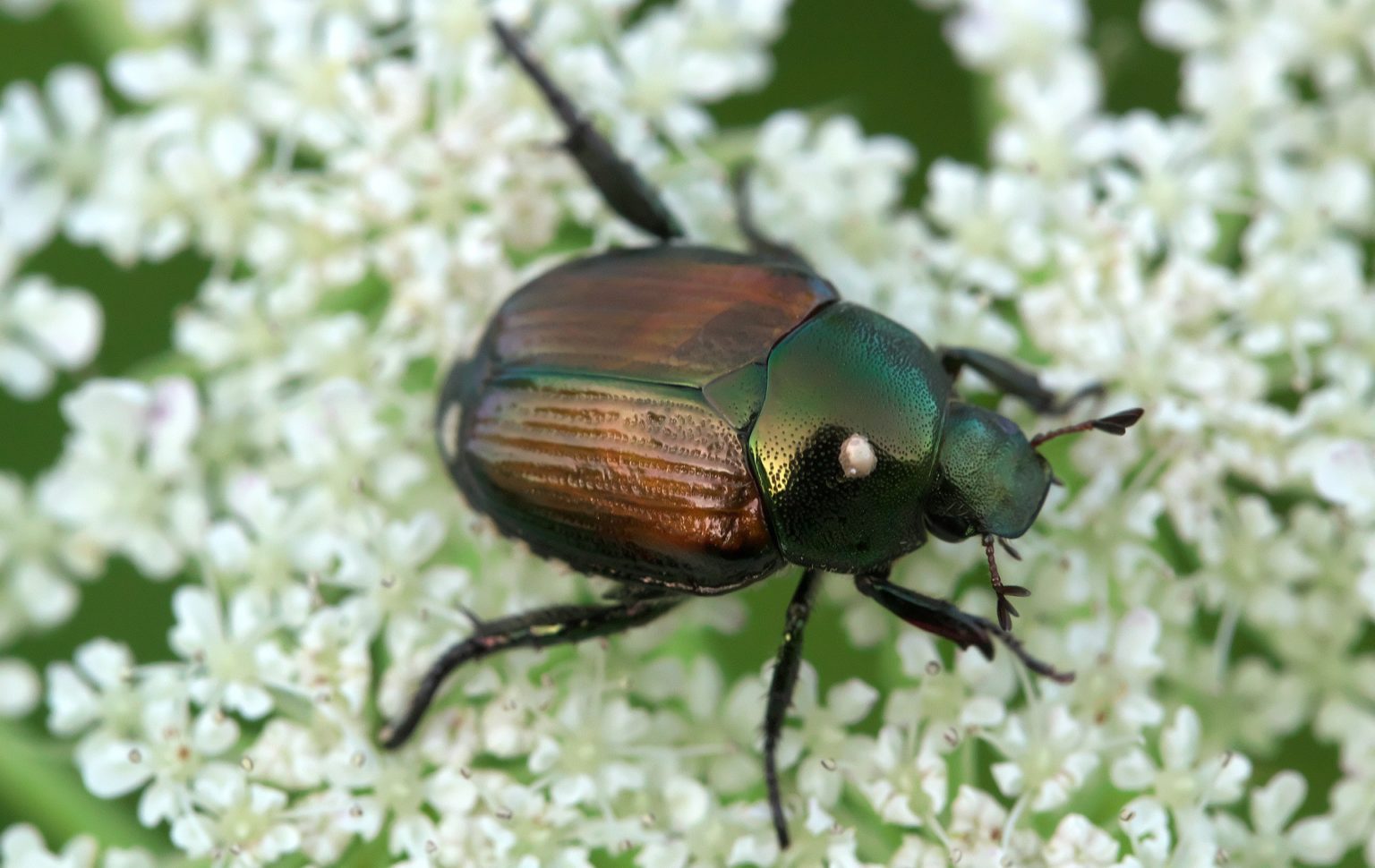Whether you are new to gardening or not, chances are excellent that you will meet an eerily beautiful, but nuisance guest in your garden. I’m referring of course to Japanese Beetles, and since they were first spotted in Missouri in 1934, have become a destructive pest in agricultural and residential plant cultivation. While Japanese beetles can cause damage to some of your favorite garden plants, we want to offer ways of managing this insect to minimize their feeding.
What to look for?
Japanese beetles have reddish green, iridescent carapace and typically seen in clusters. They also have a habit of “skeletonizing” leaves, by eating the leaf surface in-between the mid-veining. While the beetle is the adult form, they hatch from a grub that also damages lawn turf. Looking for brown, dead patches in your lawn can mean that the grubs are feeding on the turf roots. If the dead area is grasped with the hand, and lifted, you may see them in the soil underneath. While rarely fatal to garden plants on their own, they can strip plants of their leaves quite quickly, sometimes in just a few days! In their weakened state, they are more susceptible to other insects and pathogens.
What are some methods to control Japanese Beetles?
Fortunately for us (and our plants) there are many ways to help mitigate the damage that Japanese beetles can inflict. The quickest is applying a foliar application of broad-spectrum insecticide on the plant that is under siege. Using permethrin, pyrethrin, and bifenthrin are effective spray options. Proper spraying times are before 7 am and after 7pm, as most of the beneficial insects are not as active at these times. The next is using systemic insecticides, which are applied to the plants root zone. They’re then translocated within the plant to the leaves, shoots and stems. While this does help, the leaves must be ingested by the insect for the active ingredient to take effect. Applying a Grub Control to your lawn in March-May is another option that will help you protect your lawn from the grubs, and stop them from hatching into adults. For an organic option, fill a bucket with warm, soapy water, and simply brush the beetles into the water. They will fall in and drown, leaving no chemical traces. This should be done several times a week to keep the amount of damage to a minimum.
Employing Traps for Japanese Beetles
For many years, people have used traps to try to mitigate the presence and damage caused by Japanese beetles. I must recommend caution if you’re planning on using this method. The traps have a potent pheromone that attracts Japanese beetles from a long distance and initially used as a tracking method to see if they were in your area. Since it is detected by Japanese beetles as far away as a quarter mile in every direction, you’re drawing more to your area! Unless you are planning on large scale trapping, this method is not the best option.
In Summary
We’ve taken a look at this insect, have learned what to look for, and have learned several ways to minimize the damage that these prolific insects can inflict on our gardens, lawn and landscape! If you tend to have issues with Japanese beetles, please come into Colonial Gardens, and we will help find the solution that is right for you!
Written By "Trav the Tree Guy" Morcha, Nurseryman

Beetle
